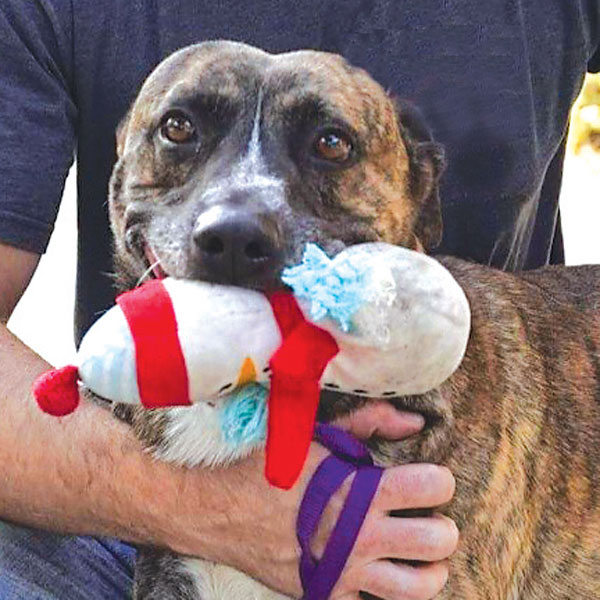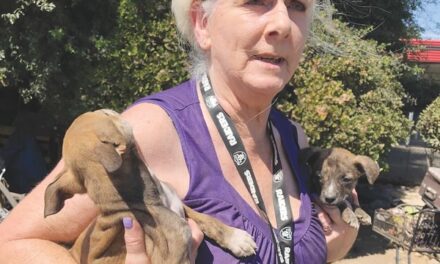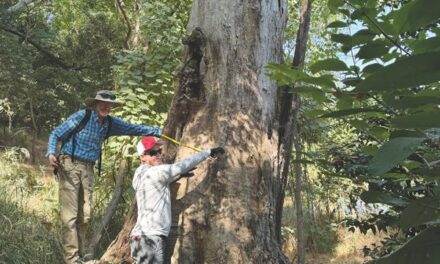Waffles was a stray when he arrived at the city’s Front Street Animal Shelter last September. The friendly 3-year-old shepherd/bull terrier mix became a shelter favorite. Volunteers called him a “belly-rub addict.”
The brown and black brindled canine was adopted Oct. 6 and returned Oct. 18; adopted again Dec. 11 and returned Dec. 15.
One day later, Waffles was euthanized.

“Waffles has a long history of being in and out of the shelter,” says Front Street Manager Phillip Zimmerman.
Waffles’ first return was due to fighting with the adopter’s other dog. “We felt he should be the only dog in the house,” Zimmerman says. “The Dec. 15 return of Waffles was because he tried to attack a toddler. She wasn’t injured, but we felt he should not be placed with children.”
No other dogs, no children. Common requirements for many dogs up for adoption. One problem: Waffles was never included on the list of dogs available for “rescue” by non-municipal animal welfare organizations.
At the time, Zimmerman says Front Street was “beyond capacity.” He says the management team had to make a decision. The decision was to kill Waffles.
“We have a dog that we know is dog aggressive in a home. We have information that this dog is potentially children aggressive,” he says.
Zimmerman poses a theoretical situation if Waffles was adopted a third time: “The perfect home. Mistakes happen. Dogs get out. Children walk down the street.”
On the theory that Waffles might escape, might come across a child, might bite that child, the shelter killed the dog.
“I don’t know what their excuse will be about why they killed Waffles, or why they didn’t bother to include him on the rescue list,” says Elyse Mize with Fix Front Street, a group of animal advocates bringing attention to what they call the city shelter’s mismanagement
Mize notes there were seven dogs, including Waffles, killed on Dec. 16 or 17. No dogs were placed on the rescue list for multiple days. In the past, Front Street’s rescue list included “a multitude of dogs labeled with some sort of ‘aggressive’ tendencies, including dogs they say had bit someone,” Mize says.
Waffles had no bites on his record. Yet he wasn’t given a chance for rescue. Why?
“Are they perfect for the community?” Zimmerman asks about dogs like Waffles. Looking around at his staff, he adds, “The majority of us in this room all have children or grandchildren. But we should go above and beyond to try to find this dog a home when we have this information, when the entire shelter is at capacity?”
Waffles would say yes.
“If we had plenty of room and plenty of time, we would have probably put him on a rescue list,” says Lizz Thompson, Front Street’s shelter operations manager. “It’s easy to say put everything on the rescue list. But there are only so many resources and time that you have.”
Front Street reports approximately 80 dog and cat rescue groups on its list. The county’s Bradshaw Animal Shelter has more than 500 dog and cat rescue partners, including 19 out of state. The Sacramento SPCA has 505.
“Every other week, Oregon Humane would come with the big bus and pull dogs, and sometimes cats, from our shelter,” says Gina Knepp, former Front Street manager. “We also routinely sent animals to Idaho Humane.”
Knepp, who is now with Michelson Found Animals, networked with other area shelters. “I remember calling Bradshaw and saying I’ve got a plane to fill. I’ve got to put 25 on it, minimum. 50 ideally. Can I take some of your dogs?”
That no longer happens at Front Street.
“Believe me, a dog is lucky if it gets on the rescue list because they’re killing plenty of dogs that never make it to the rescue list that are adoptable,” says Julie Virga with Fix Front Street. “They just need a little help. They just need a little TLC. They need to get out of the shelter.”
In addition to transferring more animals to rescue groups and other shelters, animal advocates say Front Street should hold more off-site adoption events and work harder to market pets in foster care. In mid-February, Front Street reported 356 dogs in foster homes. Only 24 were listed as available for adoption on the website.
Front Street also falls short promoting animals via social media. Rick and Morty are two Belgian Malinois who found rescue, but no thanks to the city shelter, Virga says. When Front Street tried to leash them up, they “allegator rolled” on the floor. “They weren’t biting, they weren’t aggressive. They were just scared.”
Fix Front Street shared the dogs’ story, including their euthanasia date, on its adoption/foster/rescue Facebook page. “A Malinois rescue sent one of their people out to evaluate the dogs and they said these dogs were misrepresented. They’re fine,” Virga says.
“Long story short, we found a rescue and they’re out of the shelter. And they were going to kill them. These are exactly the kind of dogs who can be helped by social media shares.”
Thompson says the dogs were fearful on intake, but their behavior improved. “Could we have done more for Morty and Rick? Yes, if we had more resources. We did the best we could with the resources we had. Is it fun? Nope. Does it suck? Yep.”
The job of foster and rescue coordinator falls on one staff member at a shelter that took in more than 7,600 dogs and cats last year. In December, when Waffles was killed, 80 dogs and cats were euthanized.
“We got ourselves into this pickle where the dogs were coming in faster than we could get them out,” Thompson says.
“Putting them on the rescue list, or getting them seen by a vet, or getting them out to foster, or making sure they have enough enrichment to make sure they are healthy and happy here, that all takes time.”
As for the rescue list, “we are not adding them as fast as we would like them to be added,” Thompson says. “But we are doing our best with the caseload we have and the resources that are available.”
Tell that to Waffles.
Cathryn Rakich can be reached at crakich@surewest.net. Follow us on Facebook, Twitter and Instagram: @insidesacramento.
















